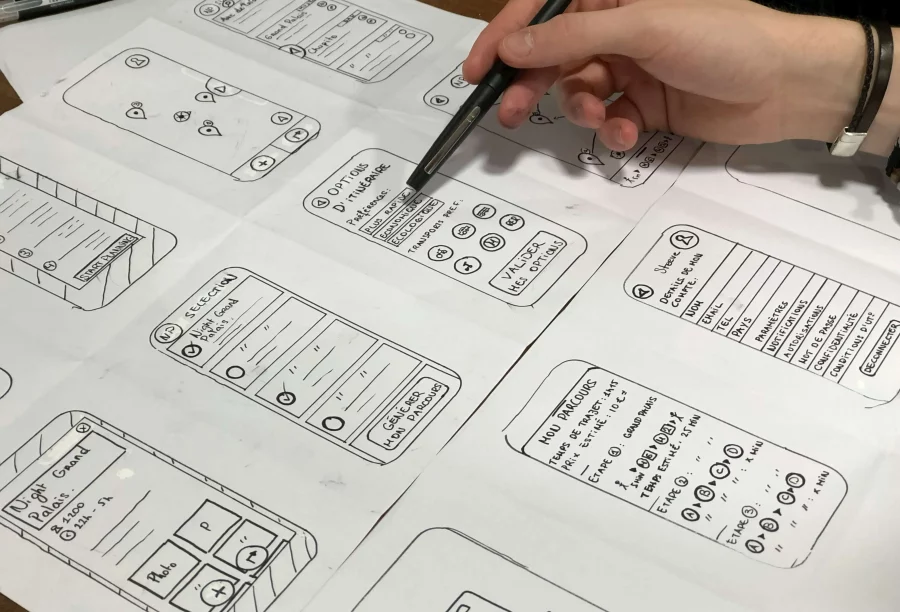
Estimated reading time: 5 minutes
A great customer experience is essential for businesses to succeed. Yet, many companies struggle to optimize the “customer journey” – the full set of touchpoints when users interact with your brand. From initially hearing about you to buying to post-purchase, every interaction matters.
With some strategic user experience (UX) tricks, you can transform the customer journey to increase satisfaction. Your brand will gain loyalty and accelerate revenue growth. Let’s explore some top ways to craft a seamless, frustration-free, and ultimately lucrative experience.
What Does Customer Journey Optimization Mean?
Customer journey optimization is vital to generating high-quality leads. It refers to improving the customer experience during each interaction. This strategic optimization occurs across the funnel as they move towards becoming leads and buyers. The goal is to eliminate pain points and create “wow moments” that delight customers.
An optimized journey maps out each touchpoint, from initial research to purchase and beyond. It uses UX design thinking to empathize with users. You have to understand their needs and build experiences that markedly improve their lives.
The result is an intuitive, almost magical flow that converts better by delivering real value.
Tips To Optimize The Customer Journey

Optimizing the customer journey is an ongoing process instead of a one-time fix. It requires constant tweaking as preferences change and best practices evolve.
To help you get started, here are 7 UX tips for revolutionizing the customer journey:
Assess The Existing Customer Journey
Before optimizing, you need to grasp strengths, weaknesses, and gaps in the current journey. Analyze data across channels on:
- Traffic sources
- Bounce rates
- Conversion rates
- Support tickets
- Social media chatter
For example, your website may have high traffic and low bounce rates but bad conversion rates at checkout. That could signal an issue with that specific part of the experience. Perhaps the checkout process has too many steps. Or, maybe users find the pricing confusing.
Collect Feedback
Talking to real customers is invaluable for optimizations. After all, they are the ones experiencing the journey firsthand!
Implement feedback tools like surveys, reviews, and forums to continually monitor needs. Another good practice is to separate users into buyer personas to uncover specialized wants. Listen closely to pinpoint the root causes behind pain points. It could be anything from a confusing mobile experience to limited payment options. Use this input to guide optimizations.
Let this primary research steer your decisions on improving experiences.
Map The Customer Journey
With research insights gathered, a visual journey representation may help. Map out key phases and touchpoints. Every interaction with your brand should be captured.
The phases can vary by business but often include:
- Awareness
- Research
- Consideration
- Purchase
- Post-purchase support and retention
Note pain points and highlight which areas are working well. Outline an ideal path that solves struggles while enhancing strengths. This map will guide optimizations. Get stakeholder input to ensure alignment.
As you work to map the customer journey, including a comprehensive customer journey map template can be invaluable. This tool lets you visualize each interaction during your UX optimizations and track significant touchpoints effectively.
Create A Wireframe
Before design, wireframe key pages based on journey learnings. The reason wireframing is essential is that it allows for quick layout testing. It also ensures design changes are made before elements become visually distracting.
Focus on outlining layout, flow, spacing, and content groupings without colors or images. Refine structure based on user testing feedback to pinpoint issues. It is best to allow plenty of iteration time here, as wireframes provide the optimization framework.
Conduct User Testing
Nothing optimizes better than putting wireframes and designs in front of target users. Identify 5-10 testers and have them complete tasks on a prototype. Get think-aloud feedback during use to uncover roadblocks.
Ask follow-up questions on impressions and desires – not just “yes/no.” Review results and flag areas for improvement. Some common issues include:
- Confusing navigation
- Inconsistent messaging
- Cluttered layout
- Slow loading times
- Complex checkout
A/B testing works great here, too. Build multiple versions of key pages and see which performs best. Iterate based on findings before finalizing designs.
Balance Media With Usability
Certainly, vivid images and videos increase engagement. But media-heavy pages tend to load slower. Find the right balance between aesthetics and speed by examining page load times and optimization opportunities. Are images compressed properly? Are videos embedded efficiently? Remember – every second of delay kills conversions.
Let speed and aesthetics interconnect beautifully. If non-negotiable media bogs down your site, consider lazy loading – only loading it when users scroll to that section instead of all at once. There are also compression tools and plugins that can optimize media for faster loads.
Ensure Accessibility And Inclusive Design
Keep in mind customers access experiences across a spectrum of abilities and devices. Implement accessibility best practices – like alt text, to allow screen readers to describe images for the visually impaired. Similarly, color contrast is vital for inclusive design.
Keyboard compatibility enables users to navigate with keyboards instead of mice to access all content.
Everyone deserves a stellar journey tailored to their needs. Support this through ongoing inclusive design thinking. When in doubt, refer to the Web Content Accessibility Guidelines for a comprehensive accessibility checklist.
Keep It Simple And Consistent
Striving for simplicity and consistency throughout the journey can work wonders. Use clear, concise language that makes comprehension effortless. Maintain steady website/app navigation, branding, and messaging across channels.
The goal is to build familiarity while eliminating confusion. Gently guide users through intuitive pathways that enhance comfort.
In Summary
Optimizing the intricate customer journey is challenging but worth it. Start assessing existing touchpoints, gathering feedback, creating journey maps, and conducting user testing. Uncover innovation opportunities and iterate relentlessly on what’s working.
Brainstorm creative solutions and execute them with simplicity and inclusion in mind. By infusing UX design thinking across the customer lifecycle, you can increase loyalty, outpace competitors, and drive impressive revenue growth for years.
Contact Matchbox Design Group Today!
If your website could use a refresh, if you’re looking to drive more traffic to your site, or you would like to submit a guest post, fill out the form below and we’ll contact you to learn more about your digital needs.

